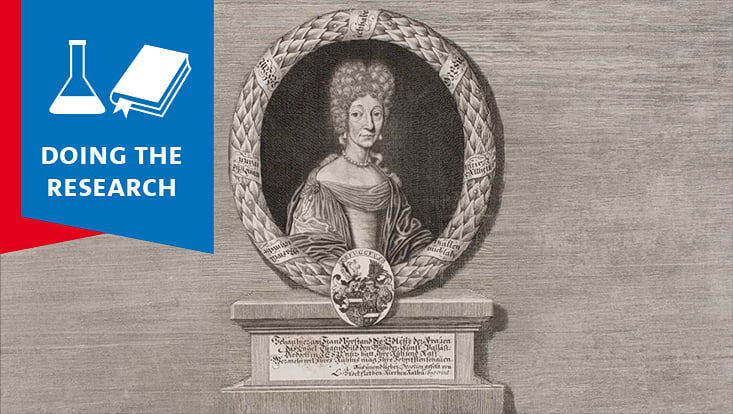Marine biodiversity research and protectionUniversity of Hamburg Researchers Part of Novel Initiative for Species Description and Classification
6 August 2024, by Newsroom editorial office

Photo: University of Hamburg/Lörz/Engel
It often takes many years for a collected animal species to be formally described. Long-delayed taxonomy is an impediment to the fight for species protection. Ocean Species Discoveries—a new publication initiative—has set out to tackle this problem for deep-sea creatures. In the first issue, 2 University of Hamburg researchers from the Department of Biology are introducing a new amphipod.
Dr. habil. Anne-Nina Lörz, a research associate at the University’s Institute of Marine Ecosystem and Fisheries Science and master’s student Laura Engel jointly describe the new amphipod Lepechinella naces in the first issue of Ocean Species Discoveries. Engel provided a detailed drawing, an important part of taxonomy, of the recently discovered amphipod within a project study supervised by Lörz.

The amphipod was discovered during the IceDivA2 expedition in November 2021, which spanned the area between southernmost tip of Greenland and the Canary Islands. University of Hamburg researchers were also aboard the research ship FS SONNE and took samples at depths of 3,000 to 5,000 meters. The newly collected species was discovered at 3,600 meters in the North Alantic Ocean. It was named in honor of NACES, a newly established Marine Protected Area (North Atlantic Current and Evlanov Sea basin). Spanning an area of 600,000 square km in the North Atlantic protection also covers the seabed since 2023. The biotic communities inhabiting this vast area, however, are largely unknown.
New insights help protect species
“Our integrative taxonomy research, meaning the comprehensive, multidisciplinary description of species, is a significant contribution to biodiversity research,” says Lörz. As global biodiversity is declining at an unprecedented speed, particularly in the oceans, many species would be lost before they can be studied. “Only if we understand biodiversity, which is particularly high in the deep sea, the ecosystem can be preserved” says Lörz.
This is exactly what the Senckenberg Ocean Species Alliance (SOSA) hopes to achieve by accelerating marine invertebrate taxonomy and including them in Red Lists of endangered species. The Ocean Species Discoveries (OSD) publication series is a SOSA initiative featuring several specimen classifications per issue.
Altogether 13 contributions
The first issue of OSD involved 25 international researchers, who contributed altogether 13 taxonomic descriptions: 11 new species, one new genus, and a new description and classification of a known species. While many specialist journals expect additional ecological or phylogenetic insights in addition to the description, OSD offers concise, complete taxonomic descriptions without requiring a specific topic, says Torben Riehl, joint leader of SOSA at the Senckenberg Research Institute and Natural History Museum in Frankfurt. A sole focus on taxonomy enables us to publish significantly larger numbers of specimen classifications.
Prof. Dr. Julia Sigwart, joint leader of SOSA and one of the publication’s authors emphasizes: Only by collaborating on broadening global progress, expertise, and advancing technology will we be able to describe the estimated 1.8 million unknown species in the oceans.” We thus invite all taxonomists focusing on a particular group of marine invertebrates to participate in future editions of Ocean Species Discoveries.
Original publication:
Ocean Species Discoveries: https://doi.org/10.3897/BDJ.12.e128431
FS SONNE
The IceDivA2 expedition used the research ship SONNE operated by the University of Hamburg. The German Research Fleet Coordination Centre, located at the University, is responsible for the operations of the vessels as well as for the scientific, technical, logistical, and financial organization of all expeditions. In addition to the SONNE, the University also operates the research ships METEOR and MARIA S. MERIAN.


